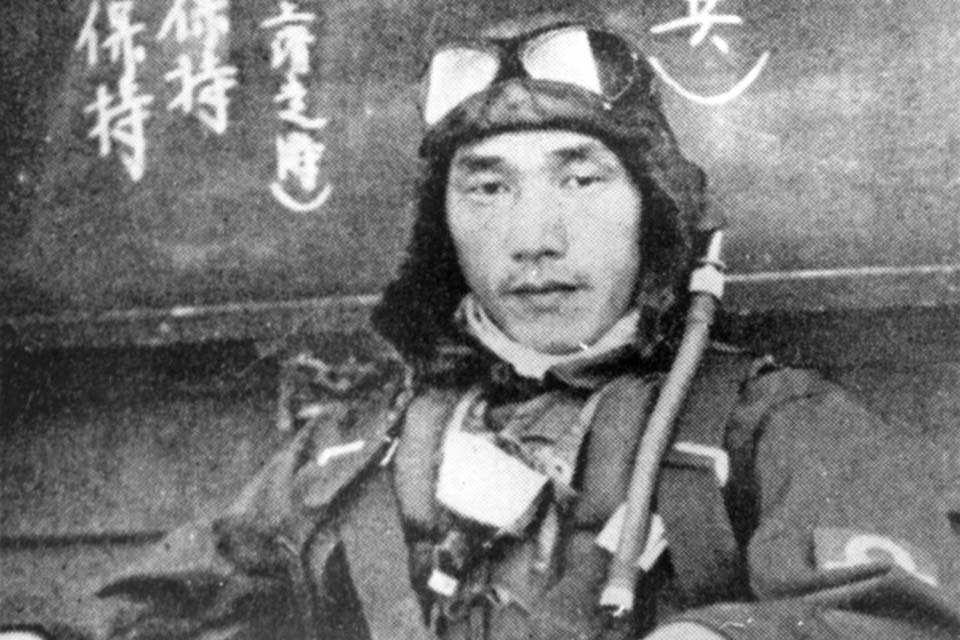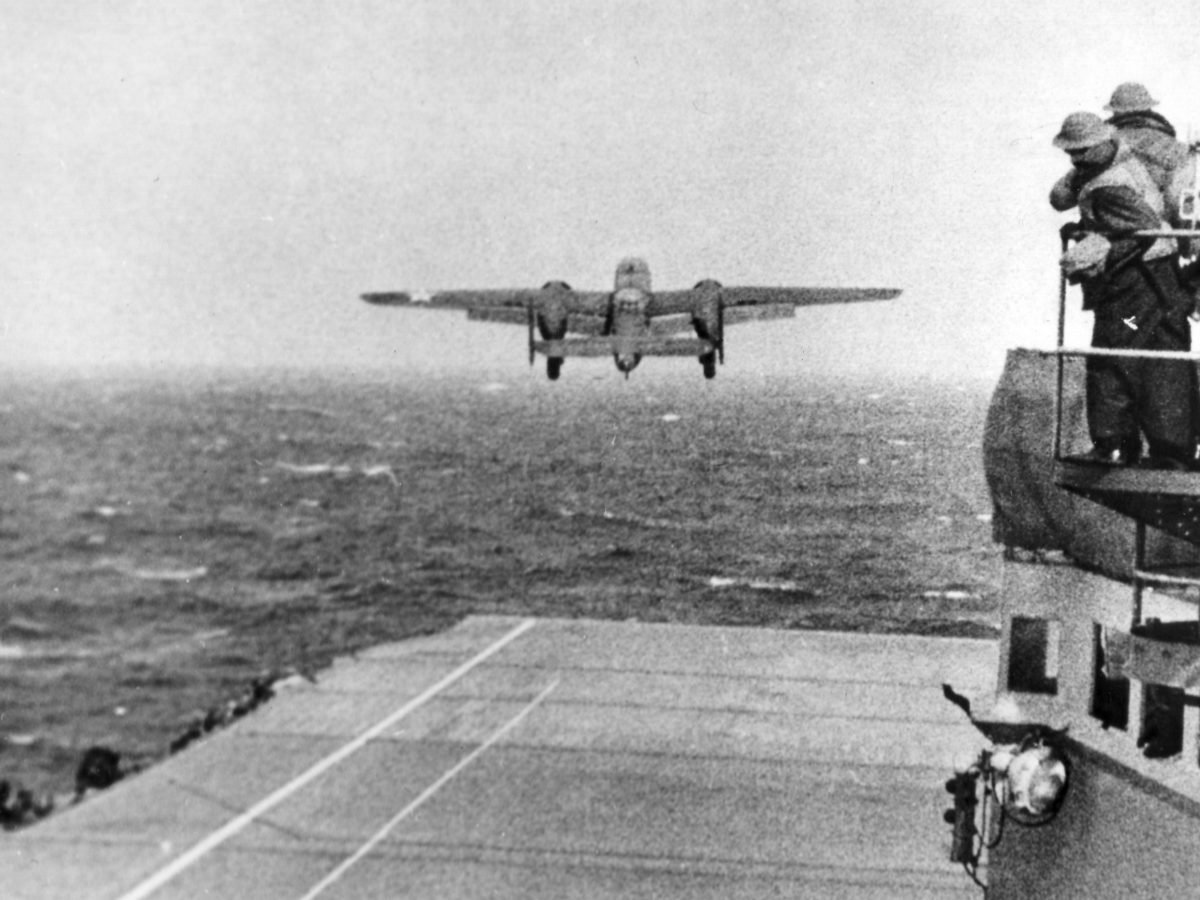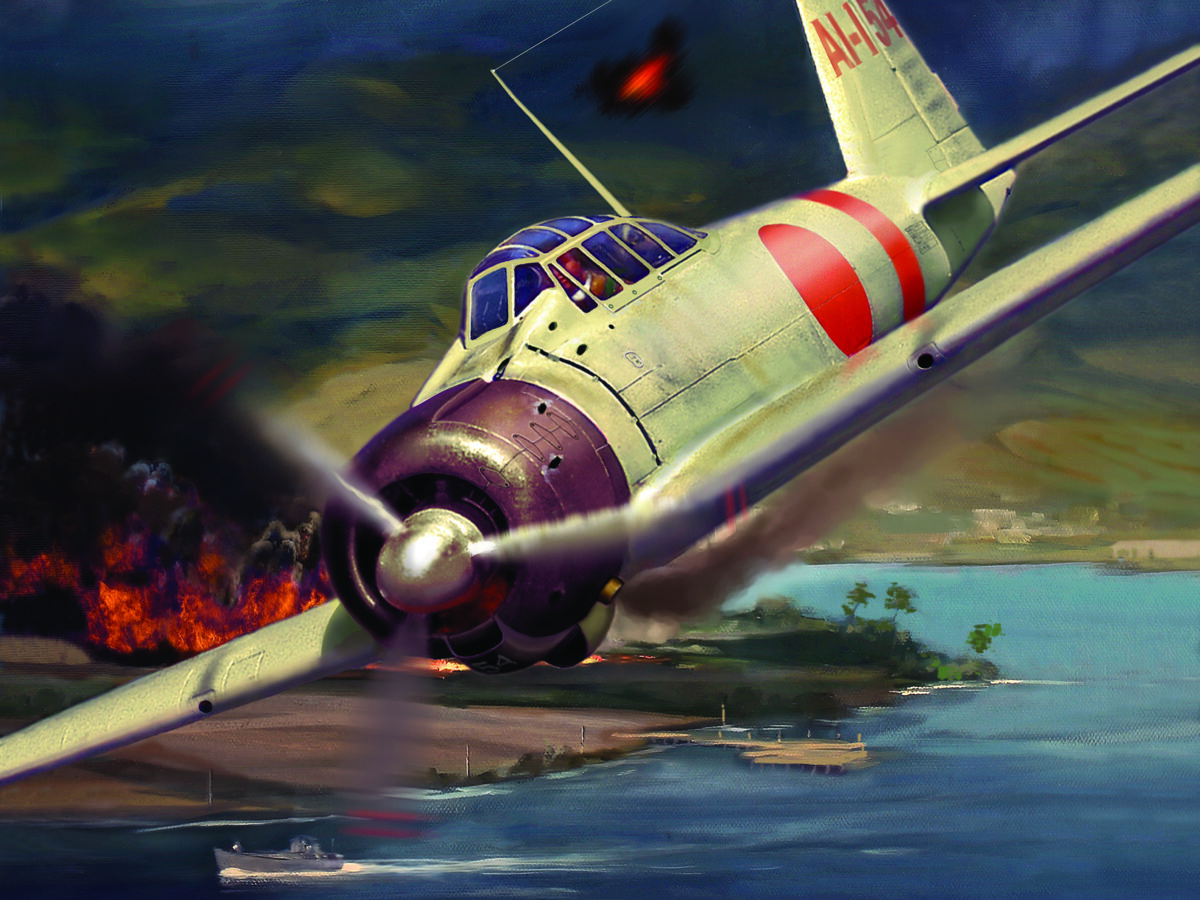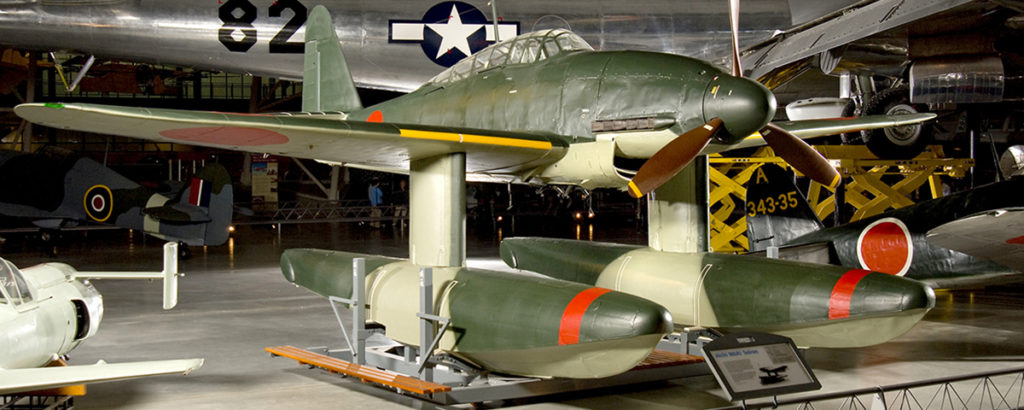On September 9, 1942, Japan attacked the U.S. mainland with a bomber launched from a submarine
“Banzai!” shouted the bombardier.
“Banzai!” replied the pilot.
Recommended for you
With that, enemy bombs fell on the United States. It was September 9, 1942, less than a year after the Japanese had struck Pearl Harbor. This time, their attack was aimed at the American mainland—specifically the forests off the coast of Oregon, perhaps the unlikeliest of targets.
For the better part of two centuries, strategists had confidently declared that the United States, protected by two oceans, was safe from any enemy. Indeed, between 1814, when the British burned Washington, and the terrorist attack of September 11, 2001, that was true, with one exception. Though they are largely forgotten today, Japan launched several strikes against the western United States in 1942, including two air raids.
The Japanese at the time had just conquered Hong Kong, the Philippines, and mighty Singapore, and they were threatening Australia. America’s West Coast was nervous—for good reason. On the evening of February 23, 1942, the Imperial Japanese Navy submarine I-17 surfaced long enough to lob two dozen shells at an oil field in Santa Barbara County, California. The following night, Japanese bombers were reported over Los Angeles. Though no damage was done—and those who claimed to have seen the bombers may have been imagining things—fear was in the air.
Even the most hysterical Americans didn’t envision an attack by planes launched from submarines. But the Japanese had been building that capability for years. By the end of 1941, they had 20 B1 submarines—formidable, 356-foot attack boats with a range of more than 16,000 miles. Just in front of the conning tower was a watertight hangar that housed the parts to a Yokosuka E14Y1, a two-seat single-engine floatplane. The sub’s crew could assemble the E14Y on a narrow deck in a matter of minutes, then launch it using a compressed-air catapult. Weighing just 3,500 pounds, the plane had a wood and metal frame, with fabric covering the wings and tail. It could fly for some five hours, with a top speed of 150 miles an hour and a cruising speed of about 85. The Japanese named the E14Y Geta, after the Japanese platform sandal with wood blocks on its sole that look like pontoons. The Allies code-named the plane Glen.
Scout plane
Designed for reconnaissance, the Geta had little weaponry. But Nobuo Fujita, who flew the floatplane assigned to the B1 submarine I-25, saw how it could be used to threaten the United States. A plucky and innovative combat pilot, Fujita had bombed Shanghai in 1937 during the Sino-Japanese War, flying off the flagship of the Third Combined Fleet. While with the I-25, he had made daring flights in a Geta over the Australian cities of Sydney and Melbourne as well as Auckland and Wellington in New Zealand.
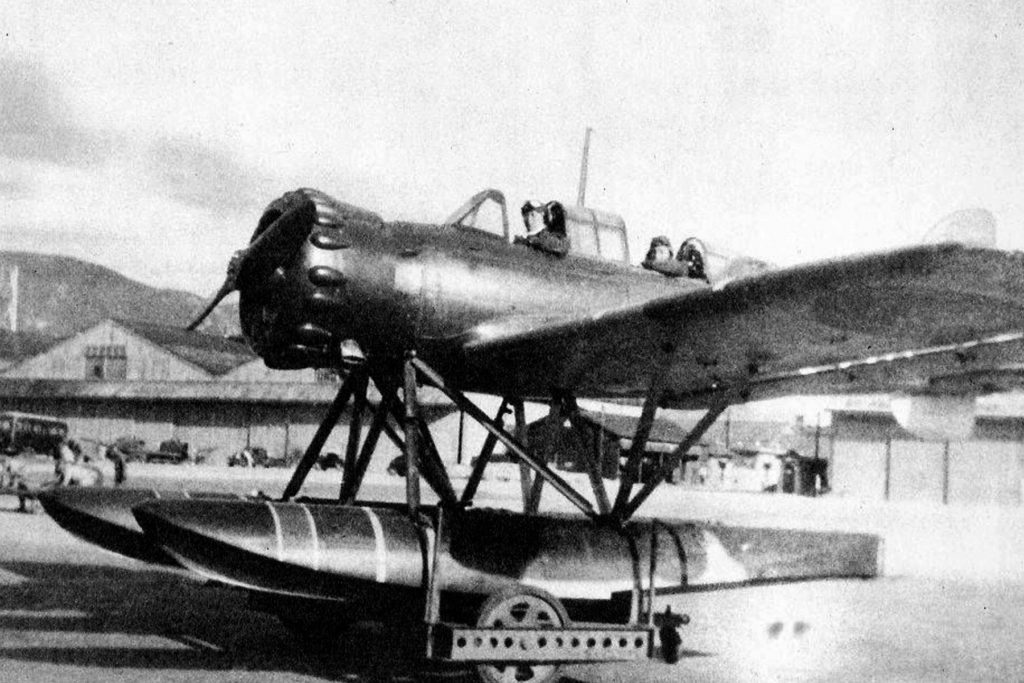
After the war, Fujita claimed that he came up with the idea of using the E14Y as a bomber. Inspired by the Japanese success at Pearl Harbor, he thought submarines could move in close to the Southern California coast, then launch the Geta against the Douglas and Lockheed aircraft factories and other key targets that lay just a few miles inland. His attack plan won him an audience with top naval commanders, including Prince Takamatsu, brother of Emperor Hirohito. They approved his scheme, with one big change. Rather than send the delicate and vulnerable Geta against the heavily defended facilities in Southern California, they ordered Fujita to fly into the Pacific Northwest and bomb the vast forests of Oregon.
Fujita was stunned. But odd as the choice of target may have seemed, it was not crazy. The Japanese leaders were inspired by a 1936 forest fire that had devastated the town of Bandon and the surrounding area on the southern Oregon coast. Incendiary bombs, they reasoned, could spark similar fires and frighten Americans, who would conclude their homeland was vulnerable. Like the U.S. strike against Japan by Jimmy Doolittle’s raiders in April 1942, the attack was to be psychological warfare.
Oregon Bound
Fujita and the I-25 left Japan on August 15, 1942, bound for Oregon. This was the sub’s third trip across the Pacific in less than a year. On its most recent voyage, in June, it had surfaced off Astoria, Oregon, and fired on the coastal defense base of Fort Stevens. Though this did little damage—one shell knocked out electricity, another destroyed a baseball field backstop—it served as a prequel for Fujita’s bombing run.
GET HISTORY’S GREATEST TALES—RIGHT IN YOUR INBOX
Subscribe to our HistoryNet Now! newsletter for the best of the past, delivered every Monday and Thursday.
The I-25 arrived off the Oregon coast in early September. Rough seas delayed the attack for a week, but by September 9, the waters calmed enough to launch the floatplane. When the sub surfaced before dawn that day, the crew assembled the Geta and mounted under each wing a 170-pound bomb filled with hundreds of incendiary magnesium pellets.
With navigator-bombardier Shoji Okuda in the rear seat, Fujita took off from about 20 miles offshore. The E14Y crossed the foggy Oregon coastline near the town of Brookings, not far from the California border. “I saw the sun rising from the mountains,” Fujita later recalled. “It was so huge, so wonderfully gorgeous. I was knocked down by the sight.”
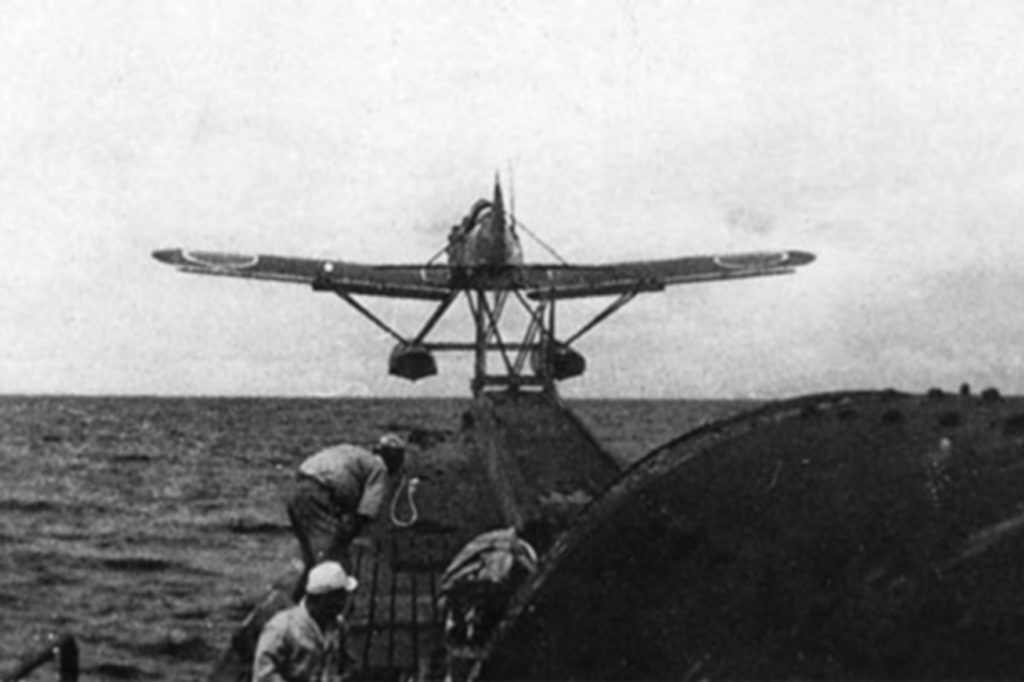
Fujita turned northeast toward Mount Emily, about five miles inland, circling the mountain. He dropped one of his bombs, then the other. Both Fujita and Okuda said the magnesium pellets ignited like fireworks. Mission accomplished, they turned back to the shoreline and the sub. Fujita landed without incident, and the Geta was stowed. But as the I-25 submerged, a U.S. Army Air Forces bomber roared out of the sky. It was on a routine patrol out of McChord Field near Tacoma, Washington, when it came upon the I-25 and attacked, dropping two 300-pound bombs. The explosions rolled the sub, and its commander ordered a crash dive, but it escaped with only minor damage.
Slow to React
Back on shore, Americans did not realize they had been attacked for quite some time. Several observers on the ground had heard the Geta. At 6:42 a.m., Howard Gardner, a U.S. Forest Service observer on duty at the Mount Emily fire lookout, spotted the plane; its engine, he said, sounded like a Model T Ford backfiring. Gardner reported the sighting to the army’s Aircraft Warning Service, but no one saw a threat in a lone, unidentified seaplane circling above a wilderness area.
When fires were discovered later that day, Gardner and others went to investigate. They initially thought lightning had touched off the flames, but they found a crater, bomb fragments, and eventually the bomb’s nose cone with Japanese markings.
Three weeks later, on the morning of September 29, Fujita made his second attack. He dropped two more bombs into forests near Port Orford, about 50 miles up the coast from Brookings. Again, witnesses spotted the plane; U.S. Forest Service employees even reported flashes and smoke. But when they searched the area, they found nothing and assumed that a small fire had started but quickly burned out in the damp forest, as often happens with lightning strikes. No bomb fragments were found, and the military and Forest Service didn’t release information about the incident until the following year.
the results
Ultimately, Fujita’s attacks failed to do much damage. The planners who had picked the targets did not take into account the mist and dampness of the Oregon coast, which had just experienced a wet summer. These conditions, combined with light winds and the quick response of Forest Service crews, prevented the fires from spreading. The I-25 did not send Fujita on the attack again, though it torpedoed and sank two tankers off the Oregon coast before returning home.
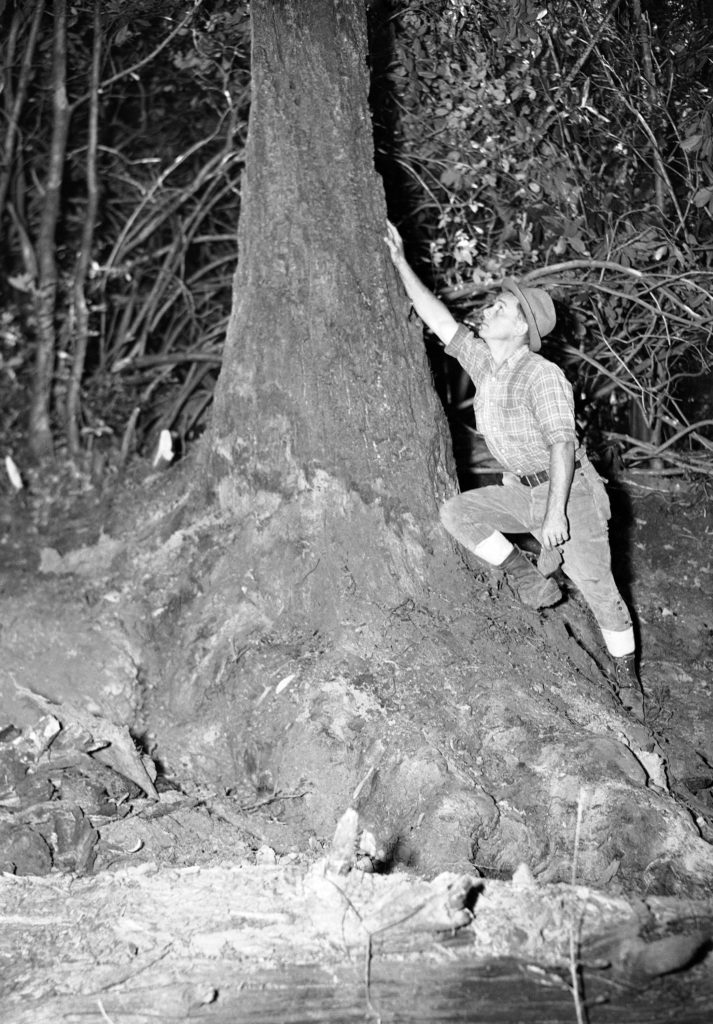
The Japanese made no further manned air strikes against the United States, but several years later, in late 1944 and early 1945, they launched more than 9,000 balloons with incendiary bombs, hoping the jet stream would carry them across the Pacific. Fewer than 400 are known to have reached North America; a handful drifted as far east as Kansas. The only fatalities were an adult and five children who, while on a church picnic in the south-central Oregon forests, stumbled upon a downed balloon and its unexploded bomb.
Fujita’s dauntless attacks may have inspired another Japanese attack plan. Later in 1942 Japan’s navy began developing submersible aircraft carriers for offensive operations: the I-400 class Sen-Toku (for sensuikan toku, special submarine). Three of a planned 18 were commissioned in 1944; at 400 feet, these were the largest submarines ever built until ballistic missile subs were developed a quarter century later. Japan planned to use these mammoths to attack such high-priority targets as the Panama Canal, New York, and Washington.
On July 23, 1945, the I-400 and I-401 departed Japan for the Panama Canal, each carrying three Aichi M6A1 Seiran floatplanes—the only purpose-built bombers to operate from submarines. A few weeks later, on August 15, Emperor Hirohito broadcast his order for all Japanese forces to lay down their arms. The war ended with Nobuo Fujita as the only Japanese airman to succeed in a strike against the mainland United States.
after the war
Fujita survived the war and afterward opened a business manufacturing metal products. As the 20th anniversary of his raid neared, he received an invitation from the Jaycees of Brookings, Oregon, to attend the city’s Azalea Festival. Though he was assured that he would not be arrested as a war criminal, he hesitated: How would the Americans receive a former enemy who had bombed them? Fujita eventually accepted. When he and his wife and son arrived, they were warmly welcomed. As a gesture of goodwill, he donated his family’s 400-year-old samurai sword to the town at a ceremony on May 28, 1962, saying: “It is in the finest samurai tradition to pledge peace and friendship by presenting a sword to a former enemy.”
Fujita visited Brookings several more times in the coming years. His sword was displayed in the town’s library, and he funded a program to add books about foreign cultures to its collection. He died in 1997, at 86. After he was cremated, his daughter came to Oregon and scattered some of his ashes in the forests of Mount Emily, where he had dropped his first bomb.
—Bill Yenne is the author of numerous books about World War II, including, most recently, Big Week and The White Rose of Stalingrad.
historynet magazines
Our 9 best-selling history titles feature in-depth storytelling and iconic imagery to engage and inform on the people, the wars, and the events that shaped America and the world.


